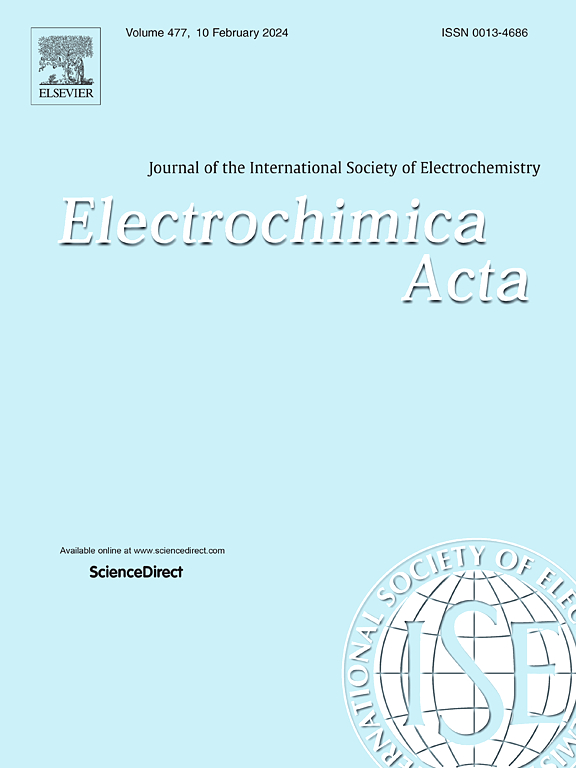Electrocatalytic activity of Ferrocenyl-curcumin modified gold electrode with Nafion for selective detection of dopamine
IF 5.6
3区 材料科学
Q1 ELECTROCHEMISTRY
引用次数: 0
Abstract
The curcumin derivative, referred to as Ferrocenyl-curcumin (Fc-cur), has been utilized for the selective and sensitive electrochemical detection of the neurotransmitter dopamine (DA) in the presence of ascorbic acid (AA) and uric acid (UA). The negatively charged Nafion-coated ferrocenyl-curcumin-modified gold electrode (NRFc-cur@AuE) facilitates enhanced electron transfer kinetics, while simultaneously suppressing the oxidative processes of ascorbic acid (AA) and uric acid (UA) on the modified electrode. The electrochemical performance of the proposed sensor was rigorously characterized using electrochemical impedance spectroscopy (EIS) and cyclic voltammetry (CV). We systematically explored the electrochemical oxidation behavior of dopamine and its selectivity through a combination of CV, differential pulse voltammetry (DPV), and chronoamperometric (CA) methodologies. Remarkably, this sensor demonstrates an extensive linear detection range of 10–80 nM, with a sensitivity of 0.1768 μA·cm⁻²/nM and an impressive detection limit of 1.004 ± 0.13 nM for dopamine oxidation. Furthermore, the NRFc-cur modified gold electrode has proven its practical utility through successful analysis of real-world samples, showcasing its potential for impactful applications in neurochemical research and diagnostics.


二茂铁-姜黄素修饰金电极对多巴胺选择性检测的电催化活性研究
姜黄素衍生物,被称为二铁基姜黄素(Fc-cur),已被用于在抗坏血酸(AA)和尿酸(UA)存在下对神经递质多巴胺(DA)的选择性和敏感的电化学检测。带负电荷的nafion包被二茂铁-姜黄素修饰的金电极(NRFc-cur@AuE)有助于增强电子转移动力学,同时抑制抗坏血酸(AA)和尿酸(UA)在修饰电极上的氧化过程。利用电化学阻抗谱(EIS)和循环伏安法(CV)对该传感器的电化学性能进行了严格的表征。我们系统地探索了多巴胺的电化学氧化行为及其选择性,通过结合CV、差分脉冲伏安法(DPV)和计时安培法(CA)的方法。值得注意的是,该传感器具有10-80 nM的广泛线性检测范围,灵敏度为0.1768 μA·cm⁻²/nM,对多巴胺氧化的检测限为1.004±0.13 nM。此外,NRFc-cur修饰金电极通过对真实样品的成功分析证明了其实用性,展示了其在神经化学研究和诊断方面的有效应用潜力。
本文章由计算机程序翻译,如有差异,请以英文原文为准。
求助全文
约1分钟内获得全文
求助全文
来源期刊

Electrochimica Acta
工程技术-电化学
CiteScore
11.30
自引率
6.10%
发文量
1634
审稿时长
41 days
期刊介绍:
Electrochimica Acta is an international journal. It is intended for the publication of both original work and reviews in the field of electrochemistry. Electrochemistry should be interpreted to mean any of the research fields covered by the Divisions of the International Society of Electrochemistry listed below, as well as emerging scientific domains covered by ISE New Topics Committee.
 求助内容:
求助内容: 应助结果提醒方式:
应助结果提醒方式:


